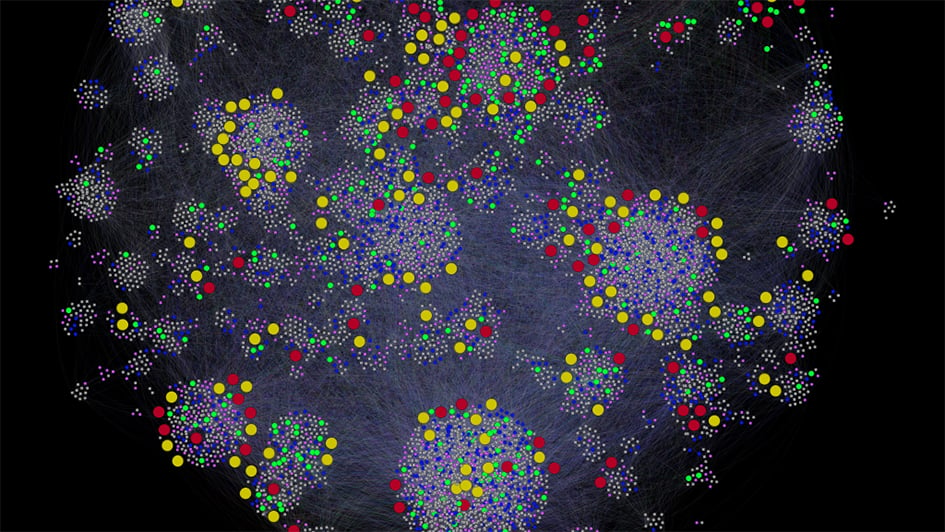
A network diagram showing protein interactions inside a cell. Red and yellow are drug targets; red is cancer, yellow is other diseases (image: Dr Bissan Al-Lazikani)
Scientists have devised a new technique that establishes the ‘postcode’ for proteins within cancer cells, as a faster, more accurate way of identifying signals that are driving cancer growth.
The technique could allow researchers to rapidly identify interactions between proteins that could prove valuable targets for the next generation of cancer treatments.
Scientists at The Institute of Cancer Research, London, developed a technique called ‘colocalisation analysis’ that allows for rapid mapping of protein interactions in a cell.
Understanding these interactions is crucial for discovering potential cancer drug targets, but it’s also very difficult to do.
Analysing interactions
Current methods are typically either labour intensive, or are limited in which interactions they can find.
But in this study, funded by Cancer Research UK and published in the journal Molecular Biosystems, the team used the location of each molecule within the cell to determine what other proteins are likely to interact with it.
By first separating the different proteins according to the part of the cell they come from and then analysing complexes of proteins within the cell, the researchers were able to identify which proteins often work together.
The scientists tested this technique on melanoma cancer cells that differed in their ability to spread.
The biggest differences they found between highly invasive melanoma cells and weakly invasive ones were largely located within the mitochondria – the power plants of the cell.
This suggests that the changes necessary to make a melanoma cancer cell more aggressive may involve how the cell generates energy.
Unpicking complexity
Although more research is needed to determine how this information may be used to develop new therapies, the study demonstrates how quickly and effectively this technique can highlight where scientists should be looking.
Study leader Dr Chris Bakal, Leader of the Dynamical Cell Systems Team at the ICR, said: “One of the hardest tasks in cancer research is getting to grips with the vast complexity inherent in cancer. Unpicking how cancer molecules work together typically involves weeks of toil.
“But our method can make the task much easier by focusing on proteins that reside within the same ‘postal code’ in the cell. Our entire analysis revealed intriguing new information about how melanoma spreads within just a week – much faster than any previously published global protein analysis. Adopting this technique could eventually help find new cancer treatments for patients sooner.”